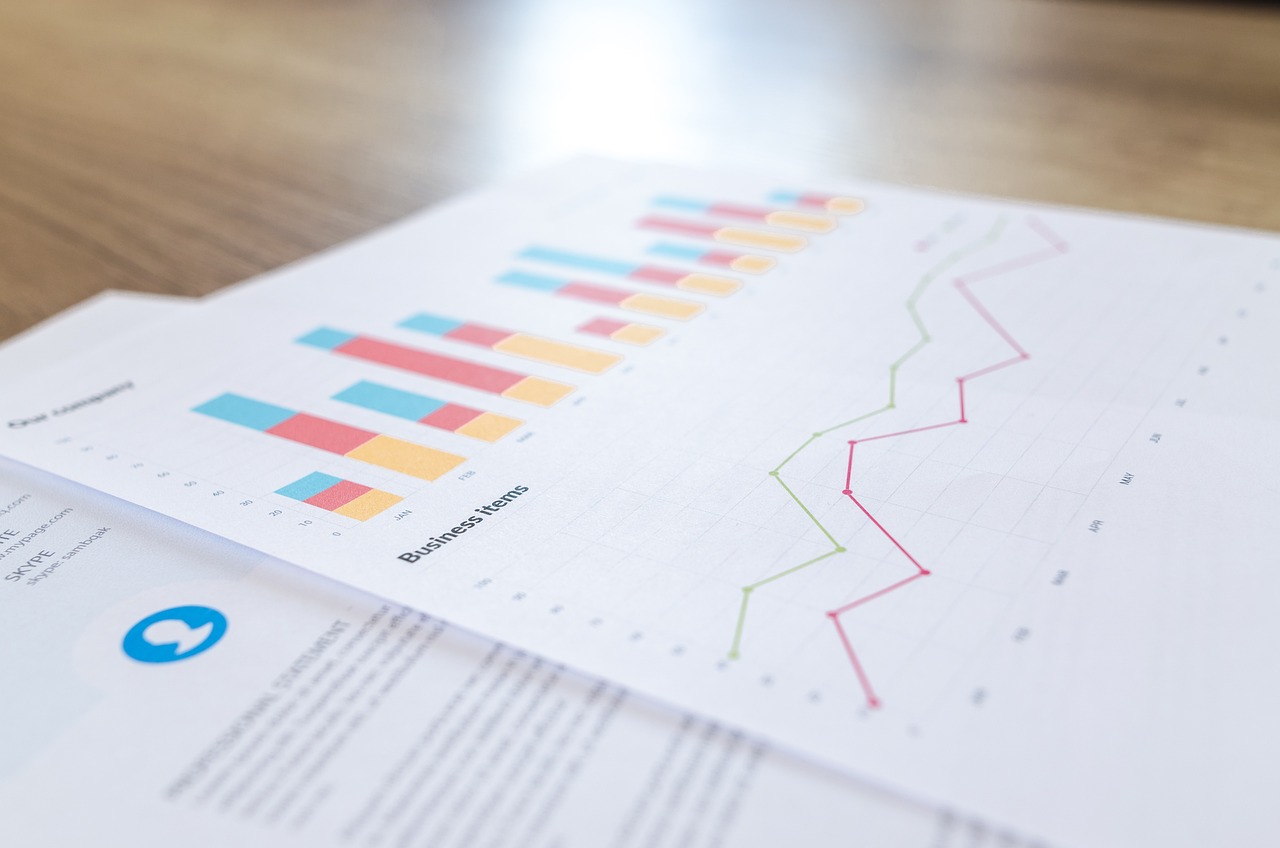
In today’s dynamic economic landscape, businesses and investors are constantly exposed to various uncertainties that can impact their financial stability and growth prospects. One essential tool in managing these uncertainties is market risk analysis. This comprehensive approach enables organizations to identify, assess, and mitigate potential risks that might arise from fluctuations in financial markets. In this article, we will delve into the intricacies of market risk analysis, exploring its importance, methodologies, and key considerations.
Importance of Market Risk Analysis
Market risk analysis plays a pivotal role in the decision-making process of companies and investors alike. By examining potential risks associated with investments, businesses can make informed choices that align with their risk tolerance and strategic goals. This proactive approach allows organizations to safeguard their assets and enhance their financial resilience, even in the face of unexpected market developments.
Methodologies for Market Risk Analysis
Value at Risk (VaR) Method:
- Calculation: VaR estimates the potential loss a portfolio may incur over a specified time horizon and confidence level. It combines historical data, volatility, and correlation between assets.
- Components: The three main components of VaR are historical data, probability distribution, and confidence level.
- Interpretation: For example, a 95% VaR of $100,000 means that there’s a 5% chance the portfolio could lose more than $100,000 over the defined time frame.
- Advantages: Provides a straightforward measure of risk, allows for risk comparisons across different portfolios, and is widely recognized in the finance industry.
- Limitations: Assumes that future market conditions will be similar to historical data, doesn’t capture extreme events well, and doesn’t consider tail risk adequately.
Stress Testing:
- Scenario Development: Stress testing involves designing hypothetical scenarios that reflect extreme market conditions (e.g., economic recession, geopolitical tensions).
- Impact Assessment: Simulate the effects of these scenarios on the portfolio’s value, assessing how different asset classes and investments perform under stress.
- Variations: Sensitivity analysis focuses on the impact of changes in specific variables, while scenario analysis creates comprehensive stress scenarios.
- Benefits: Identifies vulnerabilities that may not be evident in normal conditions, offers insights into portfolio resilience, and informs risk management strategies.
- Challenges: Requires subjective scenario selection, can be time-consuming, and may not account for simultaneous extreme events.
Key Considerations in Market Risk Analysis:

When conducting market risk analysis, it’s essential to consider various factors that can influence the accuracy of risk assessments. These factors include historical data quality, market liquidity, and correlation assumptions. Relying solely on historical data might not capture the complexities of rapidly evolving markets, while incorrect correlation assumptions can lead to underestimating potential risks.
Furthermore, the regulatory landscape also plays a crucial role in shaping market risk analysis practices. Regulatory bodies often impose guidelines and requirements that organizations must adhere to in order to ensure sound risk management practices. Compliance with these regulations is essential to maintaining the trust of stakeholders and avoiding legal repercussions.
Challenges and Future Trends
Complexity of Financial Markets:
- Global Interconnectedness: Increasing globalization means that events in one part of the world can swiftly impact markets globally.
- Emerging Instruments: The introduction of new financial products can lead to market disruptions and risks that were not previously considered.
- Regulatory Changes: Evolving regulations can influence market dynamics, requiring continuous adaptation of risk analysis practices.
Advancements in Technology:
- Artificial Intelligence (AI): AI and machine learning enable the analysis of vast datasets for identifying patterns and correlations that humans might miss.
- Big Data Analytics: Processing large amounts of data in real-time enhances risk assessment accuracy and allows for quicker decision-making.
- Automation: Automated trading algorithms and robo-advisors rely on technology to execute trades and manage portfolios, impacting market dynamics.
Human Behavioral Factors:
- Psychological Biases: Behavioral finance highlights how human emotions and cognitive biases influence investment decisions, sometimes leading to irrational choices.
- Herding Behavior: Investors often follow the crowd, leading to market bubbles and crashes based on collective sentiment rather than rational analysis.
- Overreaction and Underreaction: Investors tend to overreact to news in the short term and underreact in the long term, affecting market volatility.
Ethical Considerations:
- Environmental, Social, and Governance (ESG) Factors: Growing awareness of ESG risks and opportunities necessitates the integration of ethical considerations into risk analysis.
- Reputation Risks: Companies face potential reputation damage due to unethical behavior, necessitating the assessment of non-financial risks.
As the field of market risk analysis continues to evolve, practitioners must navigate these challenges and leverage emerging trends to develop comprehensive risk management strategies that cater to the complexities of modern financial markets.
The Role of Diversification

Diversification plays a pivotal role in the realm of market risk analysis, offering a shield against the potential adverse effects of singular market events. By dispersing investments across various asset classes, industries, and geographical regions, the impact of a single event upon the overall portfolio is lessened. This strategy instills the importance of constructing a well-balanced portfolio, allowing for the withstanding of diverse market conditions.
Quantitative vs. Qualitative Analysis
Within the domain of market risk analysis, one encounters the presence of both quantitative and qualitative analysis approaches. Quantitative analysis encompasses the utilization of statistical models and historical data to gauge potential risks. This methodology, being objective in nature, delivers numerical estimations of risk exposure. On the other hand, qualitative analysis pertains to the assessment of non-quantifiable factors like shifts in regulatory policies, geopolitical occurrences, and market sentiment. By combining both these approaches, a more holistic understanding of potential risks is achieved, contributing to the augmentation of the precision of risk evaluations.
Measuring Market Risk Types
Market risk can be categorized into distinct types including interest rate risk, currency risk, equity risk, and commodity price risk. Interest rate risk materializes due to fluctuations in interest rates, thereby affecting bond valuations and borrowing costs. Currency risk, or exchange rate risk, emanates from alterations in currency values. The fluctuation of stock prices underpins equity risk, influencing investments in equities. Meanwhile, commodity price risk stems from the oscillations in raw material prices, impacting sectors reliant on these resources.
Scenario Analysis and Monte Carlo Simulation

The practice of scenario analysis entails the evaluation of the impact of specific events or market conditions upon an investment portfolio. By dissecting varied scenarios, organizations equip themselves for a spectrum of potential outcomes. Building upon this, Monte Carlo simulation introduces randomness and variability into the analysis by generating computer-simulated scenarios. This sophisticated approach provides a more exhaustive comprehension of conceivable risks and rewards, thus enriching the insight derived from risk appraisals.
Balancing Risk and Reward
Market risk analysis entails a delicate equilibrium between risk and reward, requiring meticulous consideration. High-risk investments are capable of yielding substantial returns, albeit accompanied by the possibility of substantial losses. Low-risk investments proffer greater stability yet may yield comparatively modest returns. The establishment of an optimal equilibrium hinges upon an individual’s risk appetite, investment aspirations, and temporal horizon. An astute investor incorporates their risk tolerance and diversification strategies to mold a portfolio congruent with their objectives.
The Psychological Aspect of Risk
While market risk analysis is predominantly underpinned by quantitative analyses, the comprehension of the psychological facet of risk assumes comparable significance. Human emotions, encompassing fear and greed, can exert influence upon decision-making, occasionally fostering irrational behavior. Behavioral finance, investigating the psychological biases influencing investment choices, seeks to elucidate the propensity of individuals to veer from rational decision-making. Acknowledging and managing these biases stand pivotal in fostering effective risk management and superior investment results.
Conclusion
In summation, market risk analysis emerges as a multifaceted discipline that converges quantitative scrutiny, qualitative insights, and judicious decision-making. By embracing an array of methodologies, contemplating pivotal factors, and grasping the psychological dynamics associated with risk, entities and investors can adeptly traverse the complexities inherent to financial markets. In the face of evolving markets and burgeoning technological innovations, the art of market risk analysis assumes an indomitable status, bolstering financial resilience and prosperity within a perpetually shifting economic landscape.
